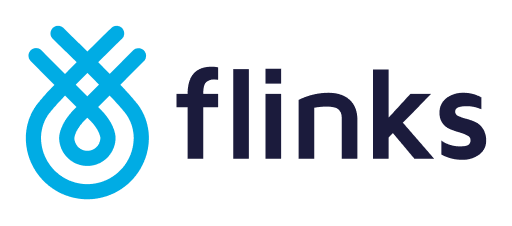A Long-Awaited Shift for Financial Data in Canada
After years of consultation, Canada’s open-banking era has an official start date and a trusted national supervisor to see it through.
The federal government has confirmed that the Bank of Canada will oversee open banking, chosen for its independence, national reach, and regulatory heft. This move replaces the Financial Consumer Agency of Canada (FCAC) and consolidates oversight of multiple modernization efforts under one trusted institution.
Legislation will be introduced in the Budget Implementation Act (BIA) within weeks, setting the stage for a multi-year rollout that reshapes how Canadians connect, control, and move their financial data. For the first time, the roadmap is real:
- Phase 1 - Read Access (2026): Consumers will be able to share account information with accredited providers securely.
- Phase 2 - Write Access (mid-2027): The rails will expand to support payments, account switching, and embedded-finance transactions.
This shift isn’t just administrative. It’s a foundational redesign of Canada’s financial data infrastructure, one built on trust, competition, and interoperability.
From Policy Uncertainty to Market Confidence
For fintechs and financial institutions, the difference between policy uncertainty and regulatory clarity is transformative.
With the Bank of Canada now at the helm, the framework gains credibility and momentum. Industry leaders expect that consolidation will simplify accreditation and reduce redundancy. This will enable fintechs and FIs to undergo a single national review to access both open-banking and real-time payments environments.
The staged rollout also gives the ecosystem time to mature:
- Establish consistent data-sharing and accreditation standards.
- Layer on transactional functionality that supports embedded finance, portability, and account mobility.
- Foster a competitive, innovation-ready financial marketplace.
As the cost and friction of switching financial providers decline, competition will intensify. Institutions that treat open banking as a minimum compliance exercise will fall behind those that embrace it as a strategic advantage, offering faster, more personalized, and consumer-centric experiences.

A Broader Push: Modernization, Mobility, and Market Fairness
The 2025 Budget marks more than just the launch of open banking. It’s a coordinated modernization agenda that extends across data mobility, payments, and competition policy:
Account Transfers and Portability
Ottawa is introducing reforms to eliminate fees and shorten transfer times for registered accounts (e.g., RRSPs). Coupled with write-access functionality, these changes remove long-standing barriers to switching and signal a firm policy goal: greater competition among financial institutions
Data Mobility Rights
A new data mobility right will give consumers legal authority to move or share their financial data across sectors: from banking to insurance, wealth, and telecom. This right forms the foundation of consumer-directed finance, ensuring individuals, not institutions, control how their information flows.
Stablecoins and the Payments Frontier
The government also announced a federal stablecoin framework that integrates CAD-denominated digital assets into the payments system under Bank of Canada oversight. By regulating stablecoins as payment instruments rather than securities, Ottawa aims to promote safe innovation and monetary sovereignty.
Together, these initiatives represent a major modernization of Canadian financial infrastructure, aligning data, payments, and competition policy under a single, coordinated vision.
Flinks: Built for the Moment and Building What Comes Next
At Flinks, this moment validates a mission we’ve pursued from day one: making financial data accessible, portable, and actionable.
With secure connections already serving the country’s leading fintechs and financial institutions, Flinks’ platform provides the infrastructure for consumer-permissioned finance:
- Trusted connectivity built on consent.
- Data enrichment that turns raw data into intelligence for credit, risk, and personalization.
- Interoperable API standards designed to integrate seamlessly with open banking and payments frameworks.
We are ready for Canada’s Open Banking era, we’ve been operating at its scale for years. Since its founding, Flinks has been at the forefront of secure data connectivity and money movement in Canada.
We didn’t wait for regulation to build responsibly, we built the rails that regulation is now catching up to.
Trusted partnerships and regulatory alignment
Through integrations with National Bank of Canada, EQ Bank, FirstOntario Credit Union, Central 1, Everlink and others, Flinks has already demonstrated what compliant, open-banking environments look like in practice, long before they were mandated. Collaboration and readiness are well underway across the ecosystem.
In many cases, Flinks has acted as an access and accreditation partner, vetting fintechs seeking API connections for banks. This approach closely mirrors the accreditation and oversight processes that are now being formalized.
“Long before Open Banking was policy, it was already happening — securely, responsibly, and at scale — through Flinks.”
Julien Cousineau, Founder & CEO, Flinks
Your Readiness Roadmap
The countdown to 2026–2027 has begun. Here’s how forward-looking institutions are already taking steps to get ahead:
- Map your data flows. Understand where customer data lives, how it’s shared, and where consent frameworks need to evolve.
- Align with accreditation expectations. Security, privacy, and operational resilience will define readiness under Bank of Canada supervision.
- Build early-stage partnerships. Start exploring use cases for read-access data integrations in 2026 so you’re ready for transactional (write-access) capabilities in 2027.
- Design for portability. Expect consumer demand for frictionless onboarding, switching and account funding.
- Look beyond banking. The coming data mobility right points to open finance— a future where financial, wealth, and payments ecosystems converge.
Flinks is already working with partners across these readiness fronts to help translate regulation into real, market-ready capability.
A Future Built on Trust and Intelligence
Open banking in Canada isn’t just regulatory infrastructure; it’s the foundation of consumer-permissioned finance. With the Bank of Canada’s stewardship, legislative certainty, and interoperable standards, Canada is moving from concept to execution.
For fintechs, banks, and innovators alike, the message is clear:
The era of waiting is over.
The infrastructure is here.
And Flinks is ready to help build what comes next.
As the country moves from policy to implementation, we’re helping financial institutions and innovators build on secure, compliant infrastructure that unifies data, intelligence, and payments.
Learn how Flinks can accelerate your open banking readiness →



